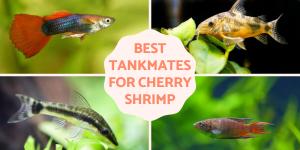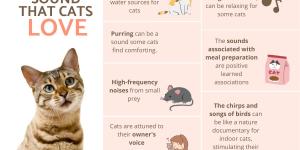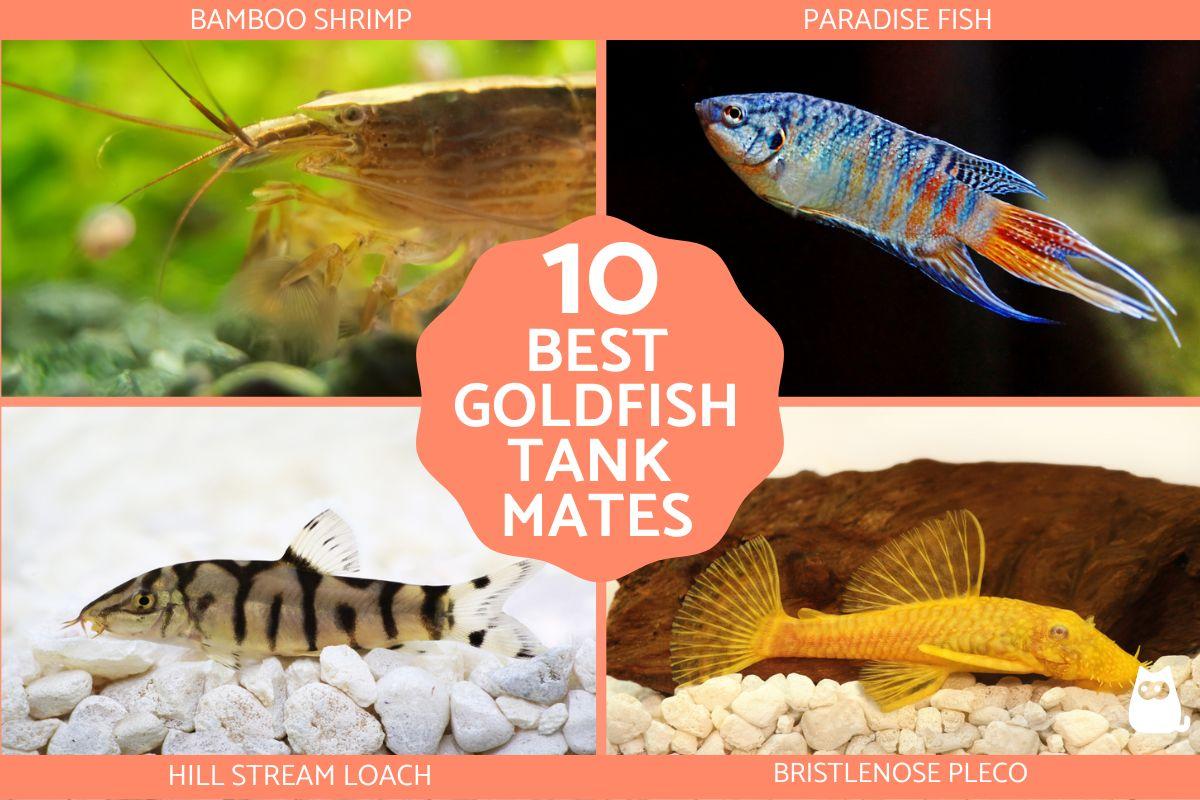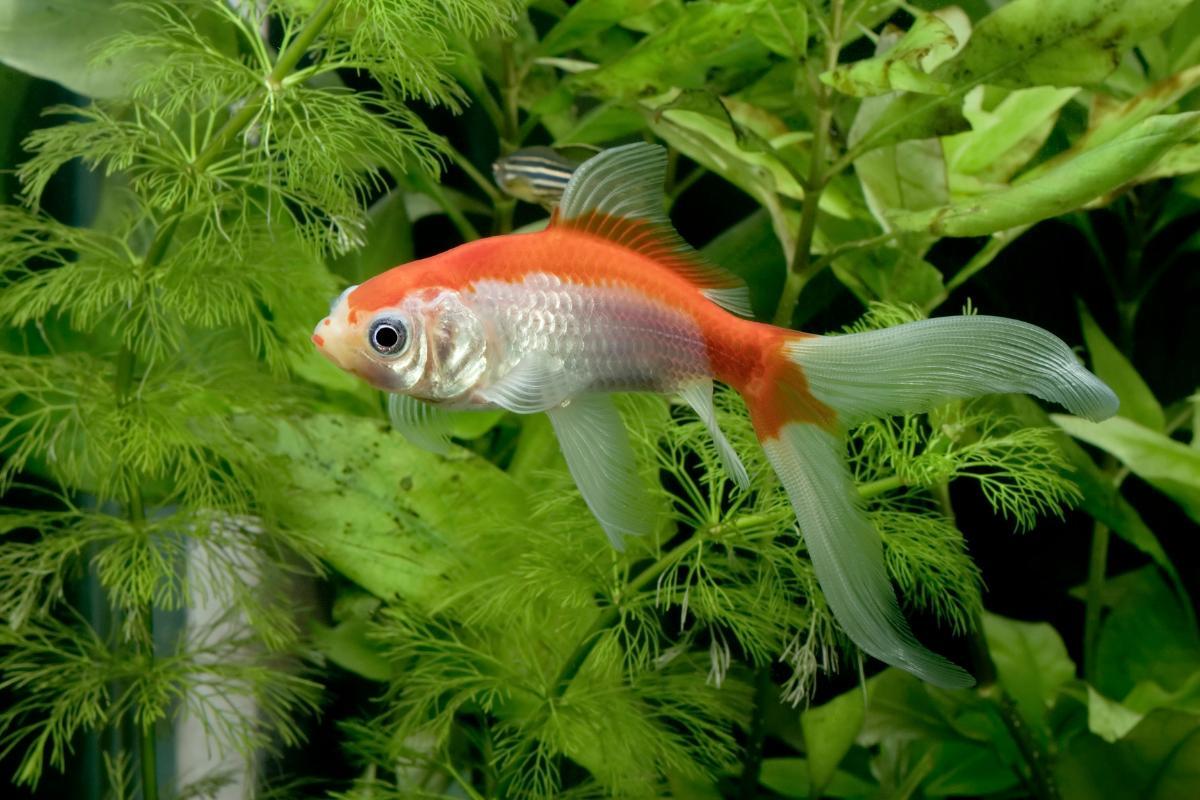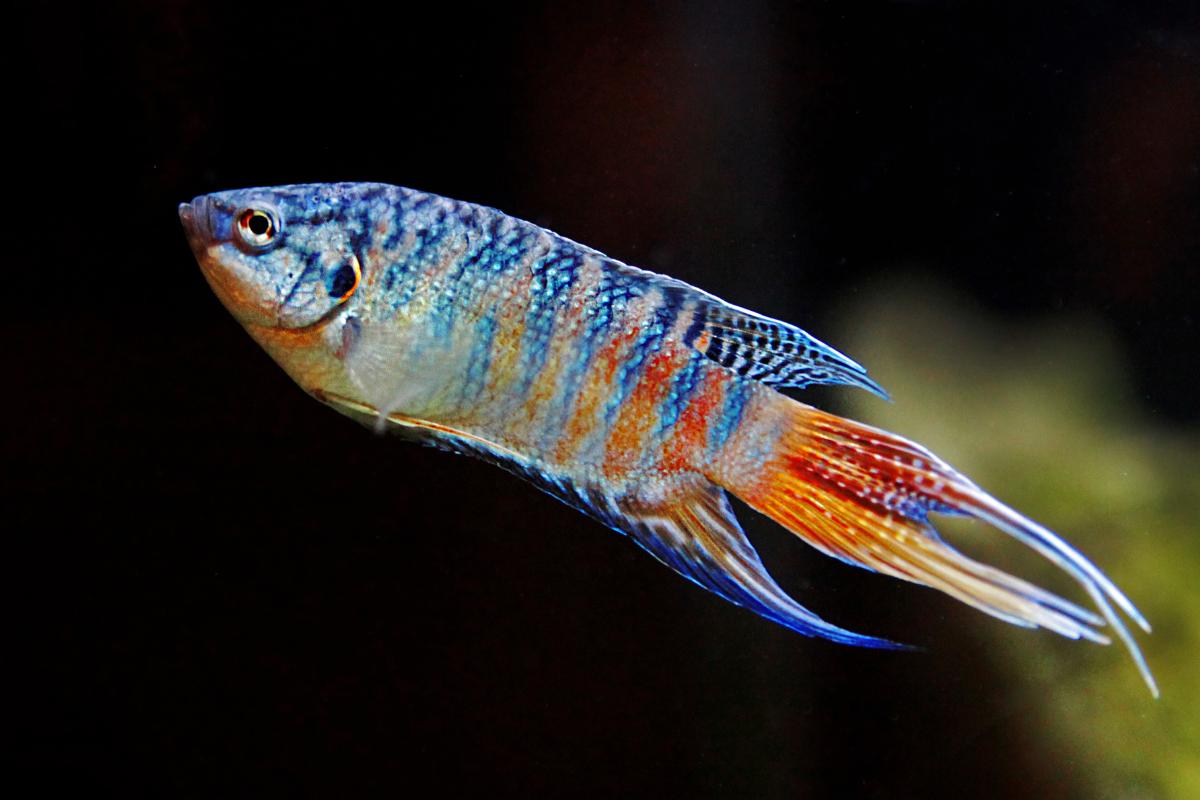Which Fish Can Live with Goldfish?


Goldfish are one of the most popular freshwater fish among aquarium enthusiasts. Known for their vibrant colors, unique shapes, and friendly nature, they have been domesticated for centuries and come in various breeds, from the common goldfish to the elegant fantail and the delicate bubble eye. These hardy fish can thrive in well-maintained tanks or outdoor ponds, but they require proper care, a balanced diet, and a suitable environment to live a long and healthy life. In this sense, choosing the right fish is crucial to maintaining a healthy and stress-free aquarium.
In this AnimalWised article, we’ll explore the best fish that can live with goldfish, ensuring compatibility in terms of water temperature, behavior, and diet.
- Telescope Goldfish
- Comet Goldfish
- Bronze Corydoras (Corydoras aeneus)
- Rosy Barb (Pethia conchonius)
- Paradise Fish (Macropodus opercularis)
- Hill Stream Loach (Sewellia sp. and related species)
- White Cloud Mountain Minnow (Tanichthys albonubes)
- Bristlenose Pleco (Ancistrus sp.)
- Bamboo Shrimp (Atyopsis moluccensis)
- Zebra Danio (Danio rerio)
Telescope Goldfish
Telescope goldfish stand out with their dramatically protruding eyes that extend from both sides of their head. While these bulging eyes create a unique look, they affect how these fish move around and which tank mates work best for them.
Telescope goldfish need to live with other slow-moving, non-aggressive fish. Other fancy goldfish like orandas, lionheads, bubble-eyes, and ranchus make good companions because they swim at similar speeds and have gentle temperaments. Fast swimmers will take food before telescopes can find it, while nippy fish might damage their vulnerable eyes. Even common goldfish swim too quickly and can be too rough for these delicate fish.
Physical and behavioral characteristics:
Telescope goldfish typically grow to 6-8 inches long with round, egg-shaped bodies. Their most striking feature is their large, globe-like eyes that protrude outward. They come in many colors including black, red, calico, and blue. Their fins vary from short and rounded to flowing double-tails.
These fish swim slowly and deliberately due to their body shape and poor vision. They spend much time exploring the middle and bottom areas of the tank. Their limited vision makes them cautious and they may startle easily when approached suddenly. They're generally peaceful, curious fish that live 10-15 years with proper care.
Feeding:
Telescope goldfish often develop swim bladder problems, so proper feeding is important. Give them high-quality sinking pellets made for goldfish, since floating foods can cause them to gulp air. Add fiber-rich vegetables like soft peas, spinach, and zucchini to help their digestion.
Tank recommendations:
Each telescope goldfish needs at least 20 gallons, plus 10-15 gallons for each additional fish. Their tank should have smooth-edged decorations and rounded stones or fine sand bottom to prevent eye injuries when they search for food.

Comet Goldfish
Comet goldfish have a streamlined body with a flowing tail and swim quickly. Unlike fancy goldfish, they need more space and specific tank mates.
Comets live well with other single-tailed goldfish like commons, shubunkins, and wakins. White cloud mountain minnows, dojo loaches, and some danios also make good companions. Don't keep Comets with fancy goldfish - Comets will take their food and stress them with fast movements.
Physical and behavioral characteristics:
Comets have long, slender bodies that typically grow to 10-12 inches in home aquariums, though they can reach 14 inches in ponds. Their most distinctive feature is their deeply forked tail fin that can grow as long as their body. They come in various colors including orange, red, white, yellow, and calico patterns.
These fish are active and spend their time swimming throughout all water levels. They're curious, social, and often follow their owners around the tank. Comets show more natural behaviors than fancy varieties - they're quick, agile, and enjoy exploring their environment. They can live 15-20 years with proper care.
Feeding:
Feed Comets a diet of goldfish pellets or flakes as their main food, plus vegetables like peas, lettuce, and zucchini. They enjoy live or frozen foods such as brine shrimp, daphnia, and bloodworms. Their metabolism runs faster than fancy goldfish, so they may need more frequent feeding, but avoid overfeeding to keep water clean.
Tank recommendations:
These active fish need at least 55 gallons for the first fish and 20 gallons for each additional Comet. Wide, long tanks work better than tall ones. Use secure tank covers since Comets often jump. Their size and activity level make them better suited for large tanks or ponds rather than standard community setups.
Ready to name your new goldfish companion? Discover creative and memorable options in our guide to naming your aquatic friends.

Bronze Corydoras (Corydoras aeneus)
Bronze Corydoras are bottom-dwelling catfish that can live with goldfish in the right setup. These peaceful, social fish need groups of at least six. They match better with calm fancy goldfish than with faster types like Comets since both have similar swimming patterns.
Physical and behavioral characteristics:
Bronze Corydoras grow to about 2.5-3 inches long. They have armored, bronze-colored bodies with a hint of green iridescence when light hits them. Their flat undersides help them stay close to the bottom, while their whisker-like barbels help them search for food in the substrate.
These catfish are peaceful and spend most of their day searching the bottom for food. They often rest together in groups and show amusing behaviors like quick darts to the surface for air (they can breathe atmospheric oxygen) and synchronized swimming.
Feeding:
Bronze Corydoras eat leftover food and some debris from the tank bottom. Don't count on them as tank cleaners, though. They need their own food, include sinking pellets, wafers, and sometimes frozen foods like bloodworms.
Tank recommendations:
These catfish can handle the cooler temperatures goldfish prefer (64-75°F), but need proper planning. They work best with goldfish in larger tanks where both fish have enough space.
Use sand or fine gravel as the tank bottom to protect their sensitive barbels - the whisker-like organs they use to find food. Sharp gravel can damage these barbels and cause infections. Add caves, driftwood, or plants where they can hide, especially with more active goldfish around.

Rosy Barb (Pethia conchonius)
Rosy Barbs pair well with active single-tailed goldfish like Commons, Comets, and Shubunkins.
When kept in proper groups, Rosy Barbs show a peaceful nature. Their active swimming matches single-tailed goldfish energy, creating a balanced tank environment. This match works less well with fancy goldfish, as their slower movements and flowing fins might trigger occasional fin nipping or feeding competition.
Physical and behavioral characteristics:
Rosy Barbs grow to 4-6 inches, making them too large for adult goldfish to eat. Males show bright rosy-red to orange-pink colors that deepen during breeding, while females have more subtle gold-orange tones with pink hints.
These fish need groups of 6-8 or more to behave naturally and reduce aggression. In proper schools, they spend most time in the middle water level, sometimes exploring other areas. Their activity often encourages goldfish to move more, promoting better fish health through exercise.
Feeding:
Rosy Barbs eat many foods including flakes, small pellets, frozen foods like bloodworms and daphnia, and some vegetable matter. They feed less aggressively than other barb species, allowing for more peaceful mealtimes with goldfish. Still, they eat faster than most goldfish, so adjust your feeding approach to make sure both fish types get enough food.
Tank recommendations:
Rosy Barbs and goldfish share the same water temperature needs of 64-75°F. Both do well in clean, oxygen-rich water with a pH of 7.0-7.5. Use a 55-gallon or larger tank, preferably long and wide, with plants along the edges and open swimming space in the middle. Add floating plants for shade and use medium-colored gravel or sand for the bottom.

Paradise Fish (Macropodus opercularis)
Paradise Fish offer a unique option for goldfish tanks due to their cold tolerance. They can live in water as cool as 61°F, which few tropical fish can handle but matches goldfish needs perfectly.
They pair best with single-tailed goldfish like Commons, Comets, and Shubunkins that can match their active, assertive nature. The mix works less well with slower fancy goldfish, which might become targets for aggression or get stressed by territorial displays.
Physical and behavioral characteristics:
Paradise Fish grow to 2.5-4 inches long with flat-sided bodies and bright colors. Males show vivid blues and reds with vertical red stripes and longer fins. Females have more subtle coloring.
These fish show complex social behaviors that affect how they fit in community tanks. Males can be territorial and somewhat aggressive, especially toward other Paradise Fish males or similar-looking fish. They're curious, intelligent, and actively explore their surroundings. They swim at all levels of the tank, creating movement throughout the space.
Feeding:
Paradise Fish eat a wide variety of foods including flakes, pellets, frozen foods like bloodworms and brine shrimp, and sometimes live foods. They eat more deliberately than many tropical fish, which helps them compete with goldfish at feeding time without the frantic rush that causes some species to take all the food. They like to feed at the surface where their upturned mouths work best, but will search for food throughout the tank.
Tank recommendations:
Their ability to handle cold water makes them one of the few decorative fish that truly thrive in the same temperature range as goldfish. They do well in 61-79°F water, preferring the 65-75°F range that goldfish like.
Use at least a 30-gallon tank, with more space for multiple fish. Both species need more horizontal swimming room than height. Plant densely around the edges and add floating plants to create territory boundaries and hiding spots while keeping open swimming areas.
Notice your goldfish or tank mates chasing each other around? Understand what this behavior means in our comprehensive guide to fish social interactions.

Hill Stream Loach (Sewellia sp. and related species)
Hill Stream Loaches work well with goldfish because they need the same tank conditions, cool, oxygen-rich water. This creates a natural fit despite their different looks and behaviors.
These loaches use completely different parts of the tank than goldfish. They stick to surfaces like glass, rocks, and driftwood, while goldfish swim freely in the open water. This separation prevents competition and conflicts. They can live with both fancy and single-tailed goldfish, though they might prefer the cooler water that single-tailed varieties enjoy.
Physical and behavioral characteristics:
Hill Stream Loaches look unlike most aquarium fish. Their flat, streamlined bodies evolved to grip rocks in fast mountain streams. They grow to 2-3 inches long with mottled brown, tan, and olive patterns that help them blend in with rocky surfaces. Their specialized undersides work like suction cups, letting them stick to smooth surfaces even in strong currents.
These loaches spend most of their time attached to surfaces instead of swimming freely. They're peaceful with fish that don't compete for their space. They might show mild territorial behavior toward other Hill Stream Loaches over good feeding spots, but this rarely goes beyond brief chasing.
Feeding:
Hill Stream Loaches eat mostly algae and biofilm from hard surfaces in the tank. In goldfish tanks, which often grow plenty of algae due to high waste levels, these loaches help control algae growth. Still, they need extra food, especially in newer or very clean tanks. Give them algae wafers, sinking pellets, and sometimes soft vegetables like zucchini or spinach.
Tank recommendations:
They thrive in 65-75°F water, exactly what goldfish need. Their requirement for highly oxygenated water matches goldfish needs too. Use at least a 30-gallon tank with more length than height to give enough surface area on the bottom and sides. Arrange smooth, rounded rocks to create flowing water patterns and resting spots for the loaches.

White Cloud Mountain Minnow (Tanichthys albonubes)
White Cloud Mountain Minnows match goldfish better than almost any other aquarium fish. Their temperature needs align perfectly with goldfish, solving the main problem that makes most tropical fish poor tankmates.
These minnows are peaceful but quick enough to avoid being eaten by larger goldfish. They live well with both fancy and single-tailed goldfish, though they pair especially well with more active goldfish types. Their schooling adds movement to your tank without causing competition or fights.
Physical and behavioral characteristics:
White Cloud Mountain Minnows grow to just 1-1.5 inches long. They have silvery-olive bodies with a bright red-orange stripe running from their gills to their tail.
Keep these fish in groups of 8-12 or more. In proper schools, they move together through the middle and upper parts of the tank. Their gentle, constant activity adds interest to goldfish tanks without creating stress.
Feeding:
These minnows eat almost anything, flakes, small pellets, frozen foods like daphnia and brine shrimp, and live foods when available. They're less aggressive eaters than many tropical fish, but quick enough to get food even when living with goldfish.
Tank recommendations:
Their cold tolerance is what makes them perfect goldfish companions. They do well in 60-72°F water, exactly what goldfish prefer. For both fish, use at least a 20-gallon tank for smaller fancy goldfish plus a school of minnows. Single-tailed goldfish need much more space. Both species benefit more from horizontal swimming room than tank height. Arrange plants around the edges with open swimming space in the middle to create good territories for both.

Bristlenose Pleco (Ancistrus sp.)
Bristlenose Plecos work well with goldfish when other catfish species don't. They stay small enough to manage and handle the cooler water goldfish need. These catfish live happily with both fancy and single-tailed goldfish, though they match particularly well with calmer fancy types. They get along because they're peaceful, don't compete for the same food, and use different parts of the tank.
Physical and behavioral characteristics:
Bristlenose Plecos grow to just 4-5 inches, much smaller than common plecos that can reach 12+ inches. Males grow fleshy tentacles on their heads (the "bristles"), while females have smaller bristles.
These fish actually do what many "cleaner fish" only claim to do, they eat algae. They help keep your tank clean by scraping algae from glass, decorations, and plants. This works great in goldfish tanks, since goldfish produce lots of waste that feeds algae growth.
Feeding:
Though they eat algae, Bristlenose Plecos need extra food too. Give them sinking algae wafers, soft vegetables like zucchini and cucumber, and sometimes protein foods like bloodworms. Make sure they get enough to eat, as goldfish might take food before it reaches the bottom where plecos feed.
Tank recommendations:
They handle standard goldfish water conditions well, living comfortably in 65-79°F water, which matches the 65-74°F goldfish prefer. For both fish, use at least a 30-gallon tank for your first fish, plus 10-20 more gallons for each additional fish. Add smooth rocks, driftwood, and caves or PVC pipe sections where your pleco can hide during the day when they prefer to rest out of sight.
Ready to take your fish-keeping outdoors? Explore ideal species for garden ponds in our guide to outdoor aquatic environments.

Bamboo Shrimp (Atyopsis moluccensis)
Bamboo Shrimp (also called Wood Shrimp, Singapore Flower Shrimp, or Asian Filter Shrimp) can live with smaller fancy goldfish under the right conditions. They pair best with slow-moving goldfish like Telescopes, Bubble Eyes, and Celestials rather than faster types.
Physical and behavioral characteristics:
At 2-3 inches long, they're larger than most aquarium shrimp, which helps protect them from being eaten. This works best with young or smaller goldfish under 4-5 inches. These shrimp range from light brown to reddish, depending on their surroundings. Their unique feature is their fan-shaped front legs, which they use for feeding.
Bamboo Shrimp are peaceful and spend most of their day sitting still in the current with fans open. They often perch on elevated spots like plants or decorations. When startled, they quickly dart backward to safety.
Feeding:
Unlike other aquarium shrimp, Bamboo Shrimp don't search the bottom for food. Instead, they sit in flowing water and filter tiny food particles. This makes them perfect for goldfish tanks, which typically have more particles floating in the water.
Tank recommendations:
They adapt well to goldfish water conditions, living comfortably in 65-80°F water. The sweet spot is 68-75°F, which matches what goldfish need. For this pairing, use at least a 30-gallon tank.
Your tank needs some water flow for the shrimp to feed. Add rocks, driftwood, or plants where they can sit in the current. Include hiding spots for when they molt and become vulnerable. Use a secure lid since these shrimp sometimes try to climb out.

Zebra Danio (Danio rerio)
Zebra Danios make good tank mates for single-tailed goldfish like Commons, Comets, and Shubunkins. They swim quickly like active goldfish do, which creates a natural tank environment. While they can live with fancy goldfish too, their speed often lets them get to food first.
Physical and behavioral characteristics:
These fish reach about 2-2.5 inches long with blue-purple stripes across their silver-gold bodies. Their slim shape lets them move through the same parts of the tank as your goldfish, mostly in the middle and upper areas.
Keep Zebra Danios in groups of 6-8 or more. In groups, they school together and swim alongside your goldfish. This creates movement throughout the tank as both species go about their day.
Feeding:
Danios aren't picky eaters. They'll take flakes, pellets, and frozen or live foods. They tend to grab food quickly near the surface, while goldfish eat more slowly.
Tank recommendations:
Danios thrive in 64-74°F water, the same range goldfish prefer. This saves you from the common problem of mixing fish with different temperature needs. Both types also like well-oxygenated water with some flow, so your tank setup works for both.
Different fish species reproduce in surprisingly varied ways. Explore the fascinating world of fish birth and development in our other article.
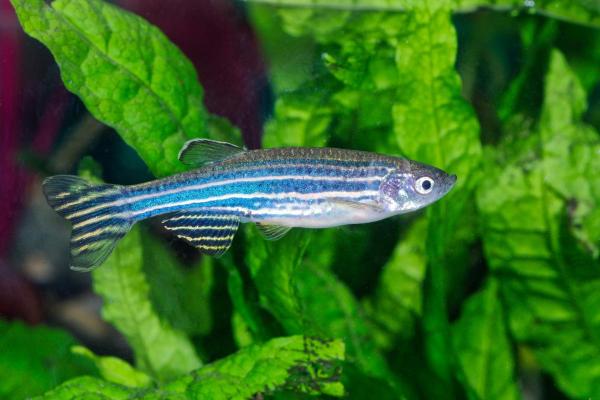
If you want to read similar articles to Which Fish Can Live with Goldfish?, we recommend you visit our Basic care category.
- Brown, C., Wolfenden, D., & Sneddon, L. (2018). Goldfish (Carassius auratus). Companion animal care and welfare: the UFAW companion animal handbook, 467-478.
- Mondal, A., Singh, P., Mondal, M., Singh, M., Tripathi, G., & Tripathi, GS (2018). Comparative study of gold fish (Carassius auratus) breeding via induced and natural breeding. International Journal of Chemical Studies, 6(6), 1940-1944.
- Smartt, J. (2001). Goldfish varieties and genetics: handbook for breeders. John Wiley & Sons.

